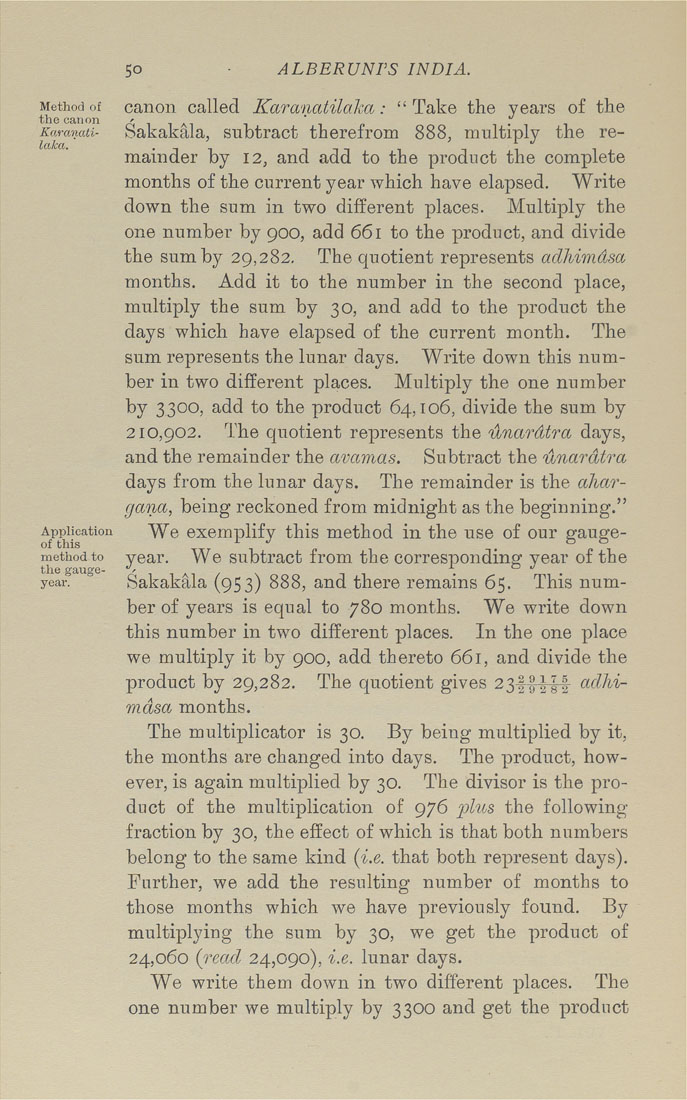5°
ALBERUNTS INDIA.
Method of
the canon
Karanati-
laka.
Application
of this
metliod to
the gauge-
year.
canon called KctrwncttilcdxXt: " Take the years of the
Sakakala, subtract therefrom 888, multiply the re¬
mainder by 12, and add to the product the complete
months of the current year which have elapsed. Write
down the sum in two different places. Multiply the
one number by 900, add 661 to the product, and divide
the sum by 29,282. The quotient represents adhimdsa
months. Add it to the number in the second place,
multiply the sum by 30, and add to the product the
days which have elapsed of the current month. The
sum represents the lunar days. Write down this num¬
ber in two different places. Multiply the one number
by 3300, add to the product 64,106, divide the sum by
210,902. The quotient represents the iXnardtra days,
and the remainder the ctvctmas. Subtract the iXnardtra
days from the lunar days. The remainder is the cthar¬
gana, being reckoned from midnight as the beginning."
We exemplify this method in the use of our gauge-
year. We subtract from the corresponding year of the
Sakakala (953) 888, and there remains 65. This num¬
ber of years is equal to 780 months. We write down
this number in two different places. In the one place
we multiply it by 900, add thereto 661, and divide the
product by 29,282. The quotient gives 23ff^|-|- adhi¬
mdsa months.
The multiplicator is 30. By being multiplied by it,
the months are changed into days. The product, how¬
ever, is again multiplied by 30. The divisor is the pro¬
duct of the multiplication of 976 plus the following
fraction by 30, the effect of which is that both numbers
belong to the same kind {i.e. that both represent days).
Further, we add the resulting number of months to
those months which we have previously found. By
multiplying the sum by 30, we get the product of
24,060 {read 24,090), i.e. lunar days.
We write them down in two different places. The
one number we multiply by 3300 and get the product
|








